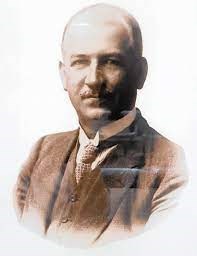At the end of last year, I found myself in a chilly seaside village on the island of Sicily trying to tell some curious locals what South Africa tastes like. As in, what are typical flavours, aromas and tastes to be found in food and drinks from this country at the end of Africa, which to the Sicilians sounded like a place of exotic mystery filled with adventures, wilderness and an element of danger.
Answering them was, I mean, the most I could do. They had been treating me to copious local offerings of anchovies-on-everything, sea-urchin pasta and crisp arancini balls, plus pools of their regional wines made from Grillo and Nero d’Avola grapes.
I began a brief lecture on my knowledge of South African specialities: Biltong… Boerewors… Snoek grilled on the open fire… A flaky golden-trust milk-tart.
And then, out of nowhere, came Pinotage, something I was not expecting to find hanging in my fond memory of typical local offerings. Pinotage the deep red wine that, I realised then, tastes like no other wine in the world. Because it truly is the taste of the vineyards and the winelands of the Cape. The one unique contribution South Africa has made to the culture of wine that began over 6 000 years ago and is made in a multitude of nations on all the earth’s continents.
“This wine, what does it taste like?” asked one of the interested young guys at the table looking out on the Mediterranean. “Wild and elegant,” I said. “Big and gentle. Rich and lean. Hot and mild…. It is a wine of all things and of opposites. Because, after all, it is a South African.
No missive attempting to hold substance on Pinotage can avoid the well-trodden tale of how this wine grape came to be a national vinous treasure. And it is pretty basic. In 1925 a very smart South African scientist named Abraham Izak Perold, then working at the University of Stellenbosch, fiddled around with his special field, namely wine grapes. Back then the local wine landscape was pretty limited in terms of grape cultivars and wine types, so Perold did what academics do: asked a question. Namely, what if the noble, blue-blood grape of Burgundy in France called Pinot Noir could be adapted so as to be able to flourish in the warm climate of the Cape? Not only to bring that variety’s refined flavour profile down south, but also have it grow to offer generous yields of the type that would make it economically sustainable for wine farmers to farm with the grape?
Pinot noir was not going to do it alone. Therefore, Perold looked for a partner. And considered Hermitage, today more readily known as Cinsaut, which is more accustomed to a hot climate due to its roots in southern France. Besides being a keen grower of healthy yields, Hermitage has a spicy, juicy flavour profile of its own.
So, it came to be that using his scientific brilliance, Perold brushed a male Hermitage flower against a Pinot Noir pollen donor to obtain a smattering of seedlings. Now, it must be remembered that this would have been one of hundreds of experiments a person of Professor Perold’s standing would have been busy with, so there were no initial “Eureka!” moments from Perold and his mates announcing the birth of a new chapter in the South African wine industry.
In fact, the precious seeds of this new grape crossing were almost lost to history in 1927 after Perold left his academic residence at Welgevallen in Stellenbosch to take-up the position of KWV’s chief wine expert. These seeds were saved by the legendary Charlie Niehaus, who also went on to become a name at the KWV and gave the material to Elsenburg Agriculture Training Institute where the first Pinotage experimental vineyard was planted in 1935.

Abraham Izak Perold – the Father of Pinotage
It was in 1941 that CT de Waal, a wine-farmer and academic at the University of Stellenbosch, made the first Pinotage wine. The De Waal name is today still entrenched in the modern Pinotage world through De Waal Wines made on CT’s ancestral farm Uiterwyk in Stellenbosch and where the oldest Pinotage vineyard in South Africa – actually, the world – is situated.
However, this was still only an experiment. It was only in 1959 – 35 years after Perold’s crossing of Pinot Noir and Hermitage – that the first commercial Pinotage wine was bottled. This was under the Lanzerac label belonging to the erstwhile Stellenbosch Farmers Winery and from grapes that had been planted at Bellevue in the Bottelary region of Stellenbosch.
Click HERE to read the full article.